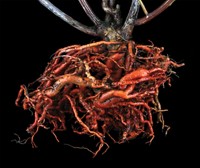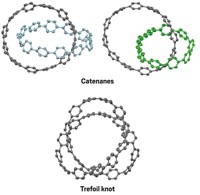Advertisement
Grab your lab coat. Let's get started
Welcome!
Welcome!
Create an account below to get 6 C&EN articles per month, receive newsletters and more - all free.
It seems this is your first time logging in online. Please enter the following information to continue.
As an ACS member you automatically get access to this site. All we need is few more details to create your reading experience.
Not you? Sign in with a different account.
Not you? Sign in with a different account.
ERROR 1
ERROR 1
ERROR 2
ERROR 2
ERROR 2
ERROR 2
ERROR 2
Password and Confirm password must match.
If you have an ACS member number, please enter it here so we can link this account to your membership. (optional)
ERROR 2
ACS values your privacy. By submitting your information, you are gaining access to C&EN and subscribing to our weekly newsletter. We use the information you provide to make your reading experience better, and we will never sell your data to third party members.
Synthesis
Tobacco cutworms insert oxygen into nanocarbon hoops and rings
Larvae perform a chemical transformation that would be challenging to do in a reaction flask
by Bethany Halford
April 29, 2024
![Scheme showing the synthesis of [6]MCPP-oxylene from [6]MCPP using the tobacco cutworm. Scheme showing the synthesis of [6]MCPP-oxylene from [6]MCPP using the tobacco cutworm.](https://s7d1.scene7.com/is/image/CENODS/20240429lnp3-scheme-1?$responsive$&wid=700&qlt=90,0&resMode=sharp2)
A team of chemists in Japan have traded in their round-bottom flasks for a squirmier reaction vessel—the tobacco cutworm Spodoptera litura. In a preprint that has not yet been peer-reviewed, the researchers report that when they fed a mix of agar, boiled kidney beans, and nanocarbon hoops and rings to these larvae and extracted the chemicals from their excrement, they found the critters had inserted an oxygen atom into a C–C bond in the nanocarbon structures (ChemRxiv 2024, DOI: 10.26434/chemrxiv-2024-1zd0b).
This was a surprise, says Riken’s Kenichiro Itami, one of the study’s leaders. Cytochrome P450 enzymes, which are probably performing the oxidation in the tobacco cutworm, typically insert oxygen atoms in C–H bonds. “When looking at the X-ray crystal structure of the product, everyone was so shocked,” Itami says in an email. “We realized that there is something very special and unique going on in the insect.”
The chemists, who were also led by Nagoya University’s Takeshi Yanai, Kazuhiro J. Fujimoto, and Atsushi Usami, did the “in-insect” chemistry on methylene-bridged [6]cycloparaphenylene ([6]MCPP, shown). They also fed the larvae cycloparaphenylene (CPP) rings of various sizes but found that only [6]CPP was oxidized.
Initially, the chemists tried using silkworms, but the nanocarbons proved to be toxic to them. Tobacco cutworms are voracious eaters known to feed on a wide variety of crops, and they consumed the nanocarbons without problems. The chemists used about 50 cutworm chemists for most of their syntheses, but for larger experiments they used up to 200 of them, Itami says.
Lawrence T. Scott, a chemistry professor at Boston College who was not involved in the research but has collaborated with Itami, says the work represents out-of-the-box thinking. “This is a really unusual unnatural compound that Itami and his group have chosen to feed to the insect,” Scott says. And the chemistry the insect does would not be easy to do in a typical laboratory reaction, he says.
“We are not saying the in-insect synthesis can replace the in-flask synthesis. But we learned that in-insect offers very exciting opportunity!” Itami says. “We demonstrated the transformations of some selected molecular nanocarbons, but the potential substrates are virtually unlimited.”





Join the conversation
Contact the reporter
Submit a Letter to the Editor for publication
Engage with us on Twitter